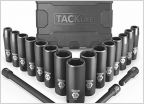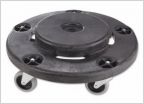-
Welcome to Tacoma World!
You are currently viewing as a guest! To get full-access, you need to register for a FREE account.
As a registered member, you’ll be able to:- Participate in all Tacoma discussion topics
- Communicate privately with other Tacoma owners from around the world
- Post your own photos in our Members Gallery
- Access all special features of the site
Grass in Colorado (or just Kentucky Bluegrass in general)
Discussion in 'Garage / Workshop' started by Boyk1182, May 19, 2020.
Page 4 of 6
Page 4 of 6


 Good enough tubing bender?
Good enough tubing bender? What're you people using for a socket set?
What're you people using for a socket set? Moisture meter
Moisture meter Tire storage racks?
Tire storage racks? Plumbing issue achieved. What gremlin cut my pipe?
Plumbing issue achieved. What gremlin cut my pipe? Home camera systems?
Home camera systems?


